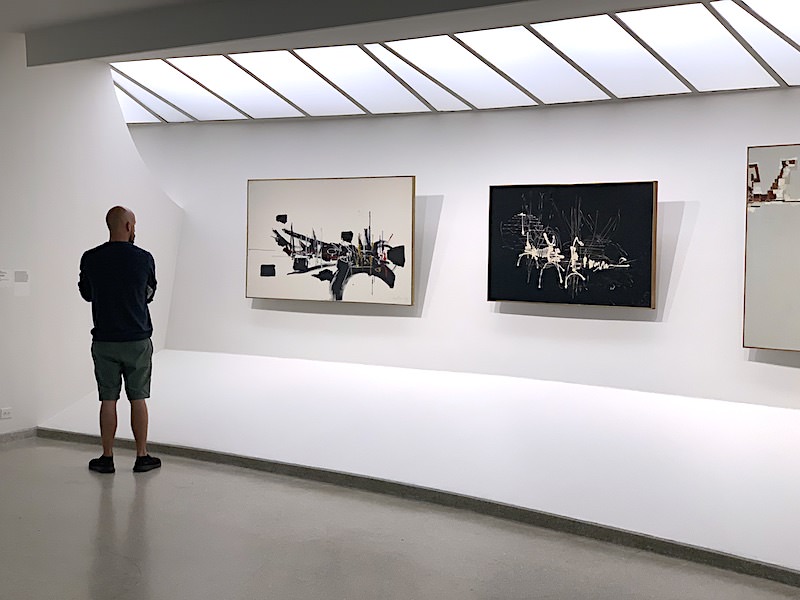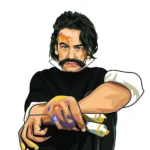“Artistic License. Six takes on the Guggenheim Collection.” is an exhibition organized by the Guggenheim Museum in New York from May 24, 2019, through January 12, 2020, curated by six artists. Richard Prince offers a section entitled “Four Paintings Looking Right,” in which he has included two major works by Georges Mathieu from the museum’s collection. In an accompanying text that is not lacking in courage in the context of an American exhibition, Richard Prince writes:
With the reshuffling of the world order at the end of World War II and the simultaneous dawn of the Cold War at the end of the 1940s, American abstract painting and sculpture gained a new prominence in the international cultural consciousness. This emergent, developing art form was premised largely on an embrace of subjectivity and chance, with roots in Native American iconography, the improvisational elements of jazz, and the influence of Surrealist artists living in exile in the United States during wartime. The ascendency of American Abstract Expressionism here and abroad was catalyzed by a strategic effort on the part of the U.S. government—the CIA in particular—to spread an ethos of liberalism in the face of encroaching Communist ideology in Eastern Europe. The bold drip paintings of Jackson Pollock were pitted against the Socialist Realism of the USSR. Abstract Expressionism, unwittingly, became an American brand for export, a propagandistic arm of the State Department.
But what is lost in this art-historical assessment is the equally persuasive argument that postwar abstraction—as an immediate rejection of the more traditional classicism and realism that emerged during the 1920s and ’30s—was largely a transnational movement. Art Informel in France; CoBrA in Denmark, the Netherlands, and Belgium; Zero in Germany; and Gutai in Japan all promoted the idea of abstraction as a liberating aesthetic strategy in the face of war-wrought devastation.
Left on the photo: Composition, 1959.
Right on the photo: Black and White Abstract (La mort de la Reine Edith), 1957.






